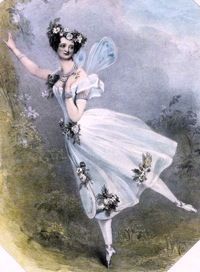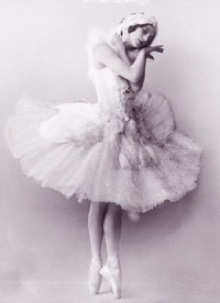Pointe Ballet
Pointe Shoes in History
Pointe ballet allows a ballerina to dance on the tips of the toes and you could say that dancer's today are spoiled for choice when it comes to pointe shoes.
Ballerina's have an advantage of nearly an unlimited amount of choice and custom made pointe shoes. Yet back when pointe shoes were not created, ballet dancers had to even balanced quickly on their toes wearing only their soft leather slippers.
With the modern day design of pointe shoes, dancers are able to do much more.
Professional dancers are able to focus on their technique to make dancing on pointe a way of effortless movement for every step.
It the history of pointe shoes that show just how much they have developed through the centuries.
 It is true to say that ballet today would have a totally different look and feel without pointe shoes.
It is true to say that ballet today would have a totally different look and feel without pointe shoes.
Pointe shoes have become the trademark for every ballerina and the signature item for each ballet performance.
Yet when pointe ballet began to develop in the late 1700's, proper pointe shoes were not created.
It was in the late 1800's that pointe shoes began to develop more. In Italy, the shoes became much stronger and harder than those worn by other dancers and they could perform technically more challenging movements.
The first ballerina considered to dance on pointe was Marie Taglioni. She danced the whole of La Sylphide on pointe in 1832 and became a very dominant figure as a female dancer.
Taglioni progressed the technique of ballet and transformed dancing on pointe. Her elegant and light style secured her a historic career an idolizing audience.
Her fans in Russia adored her so much that they even cooked her slippers and ate them with a sauce!

The start of the modern pointe shoe began to develop more around the time of the ballerina, Anna Pavlova.
Pavlova was a Russian ballerina and one of the most famous dancers of the 20th century. She had especially high insteps, so she would place toughened leather soles into her shoes for additional support.
The padding made it easier for Pavlova but her peers often considered it as cheating.
Nowadays, there are many types of padding available for ballerinas and their pointe shoes. You can get suede leather pointe shoe caps, similar to Pavlova, and lambs wool to cushion your toes.
must take responsibility for their own strengthening prior to beginning pointe work.